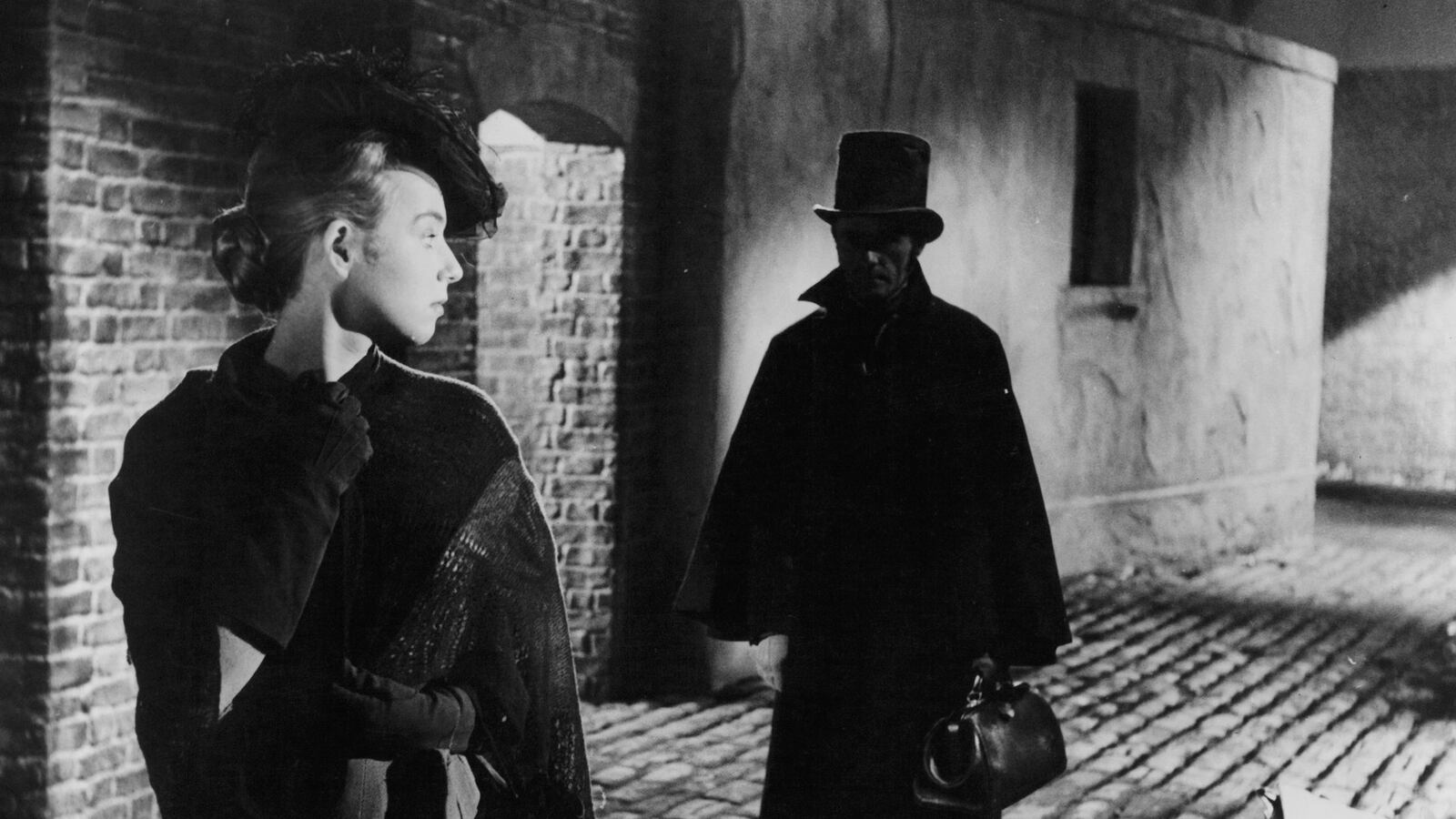The Daily Mail broke a story that, if it could be proved accurate, would probably qualify as the paper’s biggest scoop in more than a century.
In a lengthy “exclusive” timed to coincide with the release of his new book Naming Jack the Ripper, Russell Edwards—a London businessman and self-described “armchair detective”—claims to have unmasked the true identity of modern history’s most famous serial killer.
Using DNA pulled from a shawl he'd purchased purportedly belonging to the Ripper’s fourth victim, Catherine Eddowes, Edwards and a molecular biologist named Dr. Jari Louhelainen present what they say is “definitive proof” that Aaron Kosminski—a Polish emigre and early Ripper suspect—was responsible for the series of heinous murders that took place in the Whitechapel section of London in the autumn of 1888.
“I’m overwhelmed that 126 years on, I have solved the mystery,” Edwards reflects in his piece.
But Ripper enthusiasts are a dubious bunch, and as quickly as the story was published, Edwards’ “proof” was attacked by skeptics who have questioned everything from the shawl’s provenance (never clearly established), its true age (possibly manufactured a decade or more after the Ripper murders), and the DNA science used to link the shawl to both the victim and the perpetrator.
Due to the degeneration of the genetic material, Louhelainen was forced to rely on less accurate mitochondrial DNA, which American courts have generally ruled is inadmissible in criminal proceedings because it is not a unique identifier. As NBC News science writer Alan Boyle pointed out, the specific DNA signature tied to Kosminski belongs to a common subgroup that could potentially have come from thousands of people.
Others say that even if Kosminski, a Jewish hairdresser, did kill Eddowes, that doesn’t prove he is the Ripper. Some even question whether the Whitechapel murders are the work of a single killer at all, and if a murderer who self-identified as Jack the Ripper ever existed.
Indeed, both the legend and legacy of Jack the Ripper are far more gripping than the crime spree attributed to him. In the history of serial killers, the Ripper wasn’t especially prolific. He is thought to be responsible for fewer than half a dozen murders, all of which occurred in a small section of East London over a single four-month period in 1888. Two of the five victims commonly attributed to Jack the Ripper are now suspected of being killed by copycats.
Nevertheless, a cottage industry has grown up around the case. There are dozens of competing Jack the Ripper tours, websites, and books, most with their own self-appointed “expert” attached; over the past century a string of hoaxes has duped more than a few of them into making claims about the Ripper’s identity that they later regretted.
Asked for his thoughts on why a handful of murders committed more than a century ago still resonate with so many people, Stephen Ryder—the executive editor of the Ripper site casebook.org—says the killer’s dramaturgic handle has likely played a role.
“It’s just like today, branding is everything,” said Ryder, whose award-winning website has established itself as one of the more credible sources for so-called Ripperologists. “On top of that, it’s got all the elements of a good Sherlock Holmes novel—grisly murders, gaslit streets, taunting letters sent to the police, suggestions of conspiracies and cover-ups.”
Then there are people like Ryder, and his casebook.org colleague Robert Anderson, who painstakingly keep the legend alive for the tens of thousands of Ripper enthusiasts around the world who remain on the case.
While the official investigation has been closed since 1892, over the years, hundreds of professional and amateur sleuths have put forward dozens of potential suspects, some considerably more worthy than others. As Ripper experts put the screws to Edwards’ “conclusive” DNA match, an audience of roughly 35 gathered on Friday night in a sitting room inside the Victorian-era Ebenezer Maxwell Mansion in Philadelphia to hear another version of the Ripper story from author and former trial attorney Jeffrey Mudgett.
Mudgett penned and self-published the 2011 book Bloodstains—which explores his discovery, at the age of 40, that he is the great-great-grandson of the notorious American swindler and serial killer Henry Howard (H.H.) Holmes. He has his own theory about the true identity of the Whitechapel murderer—that it was none other than Holmes himself—and he is making his case in a traveling lecture/one-man-show called “The Trial of Jack the Ripper.”
Unlike Edwards, Mudgett doesn’t claim that he can prove Holmes is the Ripper. Instead he presents his case in a “mock grand jury,” asking his audience to weigh the evidence, almost all of it circumstantial, and vote on whether there is “probable cause” to bring Holmes to trial for the three Whitechapel murders that most agree are the work of a single killer.
Despite his reluctance to claim conclusively that Holmes and the Ripper are the same person, Mudgett makes it clear where he stands on the issue; and he is convinced that after hearing him out you’ll come away with the same conclusion.
“[The Ripper] was not a royal surgeon, not a Polish hairdresser, not a famous painter,” he said as he paced the room in the role of prosecutor. “No one can prove beyond a reasonable doubt who Jack the Ripper was, it takes a trial court to do that. But I can show probable cause that H.H. Holmes and Jack the Ripper are the same person.”
Holmes—who was most recently profiled in Erik Larson's 2003 book The Devil in the White City—would have been 27 at the time of the Ripper murders. He would later confess to killing nearly 30 people, many of whom were tortured and asphyxiated in the sprawling Chicago “Murder Castle” he built specifically for the purpose. He was never charged with those crimes, but was arrested in 1894 for murdering his business partner and three of his children as part of an insurance scam. He was executed by hanging in Philadelphia two years later.
The short version of Mudgett's hypothesis goes like this: Sometime in the summer of 1888, Holmes—who, as a trained doctor, fit the early Scotland Yard profile of the Ripper—traveled on an ocean liner to Britain, committed the Whitechapel murders, and wrote the famous “Dear Boss” letter—postmarked three days before Catherine Eddowes’ murder—in which Jack the Ripper allegedly coined his own monicker.
Mudgett claims that he has proof of Holmes’ British travels in a diary left to him by his grandfather, but for some reason he does not include these as evidence. Instead, the sole piece of physical evidence he can present is a computerized handwriting analysis that finds strong similarities between certain aspects of Holmes’ writing and that of the letter writer.
That’s not enough to convince Ryder, however, who points out that the authenticity of the “Dear Boss” letter has been in question since the day it was received, and is now believed to be a hoax. Nor is Holmes the first “suspect” whose handwriting has been positively compared to that of the letter’s author.
In any case, Ryder adds: “Even if we knew for sure that Holmes wrote that letter, that wouldn’t prove he was the murderer. A perverse kook, maybe, but considering his later activities in Chicago, that wouldn’t be surprising.”
At the presentation I attended, Mudgett managed to convince a slight majority that Holmes deserved to stand trial for the Ripper killings. I voted no, and left the event with less faith than ever in the judgment of my fellow man. But in terms of sheer theatrics, Mudgett is on to something. His presentation was stiff, and his findings flimsy, but he managed to keep an audience of educated museum goers in rapt attention. And that, after all, is much more the point than solving a 126-year old-case.
Mudgett has been invited to present his mock trial as a TED Talk next month, and is using the Ripper/Holmes link to lobby for the official memorialization of Holmes’ victims here in America.
Meanwhile, both he and Edwards have joined a long line of Ripperologists who have hitched their wagon to a case that so many of their colleagues have a stake in remaining unsolved.

